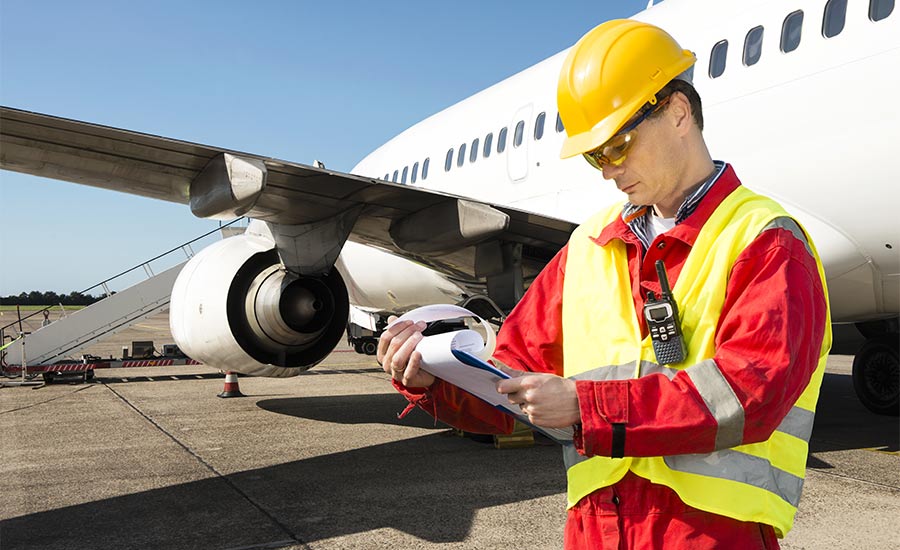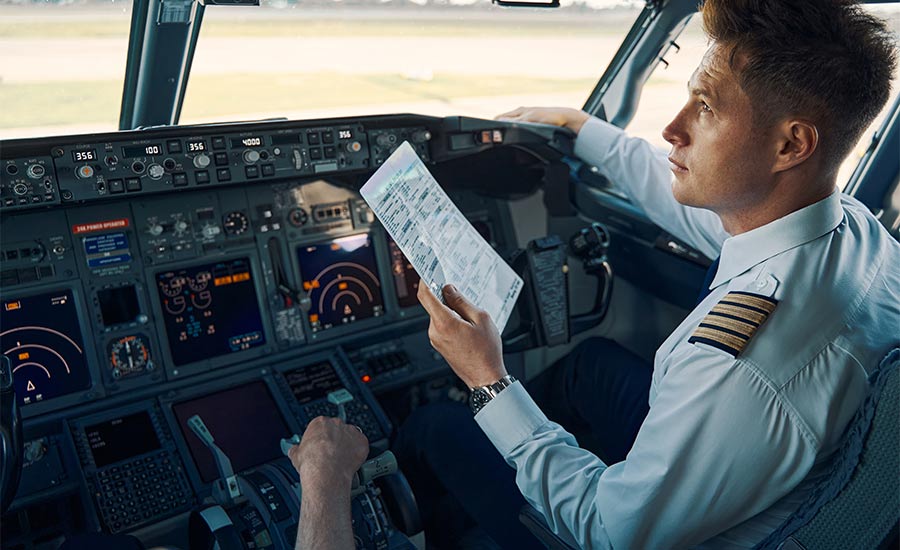
If you are managing or owning an aircraft company, you are likely facing a myriad of challenges, from adherence to stringent regulatory requirements to meticulous maintenance schedules.
Your responsibilities can become overwhelming since even minor oversights can have significant consequences. To ensure the safety and efficiency of your aviation operations, you need a structured approach — this is where a preflight checklist comes in as a powerful tool.
We’ll delve into the benefits of using preflight checklists, elaborate on the sections they must include and offer you a free checklist template to streamline your work.
Ready to create a preflight checklist?
Try doForms For Free!
What Is A Preflight Checklist?
A preflight checklist is a list of tasks or items that must be completed to make sure that the aircraft has undergone all necessary safety procedures and is prepared for flying.
Preflight checklists are used by various aviation professionals, including:
- Pilots: Pilots use preflight checklists to ensure the aircraft’s safety.
- Flight crew: Flight attendants and other crew members use preflight checklists to verify that all necessary safety equipment and supplies are on board and accessible.
- Ground crew: Ground crew members, including aircraft mechanics and ramp personnel, use preflight checklists to perform maintenance checks and prepare the aircraft for departure.
What To Include In A Preflight Checklist
A preflight checklist typically includes several important sections, each covering specific aspects of the aircraft and flight preparations:
- Exterior inspection: This section provides information about visually inspecting the exterior of the aircraft for any signs of damage, leaks or abnormalities. It includes checks on the fuselage, wings, empennage, landing gear and engine nacelles.
- Interior inspection: This section provides information about the condition and functionality of the aircraft cabin and cockpit components. It includes checks on instruments, controls, seats and cabin amenities.
- Avionics and electronics: This section covers the inspection and testing of avionics systems, communication equipment, navigation aids and electronic displays. It makes sure that all electronic systems are operational and properly configured.
- Engine and propulsion systems: This section focuses on checks of the aircraft’s engines, propellers and related systems. It includes verifying fuel levels, engine oil levels, engine controls and engine start-up procedures.
- Flight controls: This section provides information about testing and calibrating the aircraft’s flight control surfaces, such as ailerons, elevators, rudders and trim tabs. It guarantees that all flight controls react appropriately to the commands given by the pilot.
- Fuel and fluids: This section gives information about the quantity and quality of fuel, oil, hydraulic fluid and other fluids needed for the aircraft’s operation. It includes checks on fuel tanks, fuel lines, oil levels and fluid reservoirs.
- Emergency equipment: This section covers the inspection and testing of emergency equipment, such as fire extinguishers, first aid kits, emergency exits and survival gear. It makes sure that all emergency equipment is present, accessible and working.
- Documentation: This section verifies the presence and accuracy of flight documentation, including flight plans, weather briefings, maintenance logs and airworthiness certificates. It guarantees that all necessary paperwork is on board and up to date.

A preflight checklist includes information about the interior and exterior of the aircraft, along with the engine, fuel and emergency equipment
Benefits Of Using A Preflight Checklist
Using preflight checklists helps you maintain safety, efficiency and regulatory compliance, making air travel reliable and stress-free.
Some of the benefits of preflight checklists include:
- Enhanced safety: Preflight checklists make sure your team members follow all crucial safety procedures before each flight, reducing the risk of accidents and incidents.
- Consistency: Preflight checklists provide a systematic approach that guarantees your pilots and crew follow the same essential steps across different flights and operational scenarios.
- Minimized risk of human error: Preflight checklists use a structured process that reduces the likelihood of overseeing or forgetting important inspection areas.
- Regulatory compliance: Using preflight checklists allows you to adhere to the requirements of aviation regulatory authorities who often mandate you to have preflight checklists as part of your safety protocols.
- Efficiency: Preflight checklists provide a clear roadmap of tasks, streamlining the preflight process. This helps your pilots and crew to complete their preflight preparations more quickly and effectively, minimizing delays and ensuring on-time departures.

A preflight checklist allows you to adhere to the regulatory requirements, minimizes the risk of human error and enhances safety
Preflight Checklist Template
Below you will find a free template that serves as a basic framework for a preflight checklist. You can adjust and customize it to meet the specific requirements of your aircraft and operations.
1. Exterior Inspection
Fuselage
- Check for any signs of damage, corrosion or dents.
- Inspect antennas and static ports for obstruction or damage.
Wings And Control Surfaces
- Check leading edges, trailing edges and wingtips for damage.
- Ensure that control surfaces, including ailerons, elevators and rudders, move freely and smoothly.
Landing Gear
- Check tires for wear, cuts and proper inflation.
- Verify landing gear struts, hydraulic lines and brake assemblies.
Engine Nacelles
- Inspect engine cowling for secure attachment.
- Check for signs of leaks, loose fasteners or debris.
2. Interior Inspection
Cockpit
- Verify cockpit cleanliness and organization.
- Check control column, pedals and seats for proper adjustment and security.
Cabin
- Ensure passenger seats are secure and upright.
- Check cabin lights, air vents and emergency equipment for accessibility.
3. Avionics & Electronics
Avionics Systems
- Activate the avionics systems and confirm correct initialization.
- Test communication radios, navigation systems and transponder.
Electronic Displays
- Check primary flight displays (PFD) and multifunction displays (MFD) for correct indications.
- Verify functionality of standby instruments.
4. Engine & Propulsion Systems
Fuel System
- Check fuel quantity and quality.
- Ensure fuel caps are securely fastened.
Engine Inspection
- Inspect engine oil level and condition.
- Check engine inlets, exhausts and cowling for debris.
5. Flight Controls
Ailerons, Elevators, Rudders
- Ensure smooth movement and secure attachment.
- Confirm trim settings are correct.
Flaps And Slats
- Test extension and retraction of flaps/slats.
- Ensure position indicators are accurate.
6. Fuel & Fluids
- Verify fuel quantity.
- Check for water contamination in fuel.
- Inspect oil and hydraulic fluid levels.
- Check for leaks in oil and hydraulic systems.
7. Emergency Equipment
- Make sure fire extinguishers are charged and accessible. Check expiration dates.
- Verify first aid kits are complete and in good condition.
- Check the number, condition and storage conditions of life jackets.
- Check that oxygen masks are available, functional and properly stowed.
- Check whether emergency exits work properly.
8. Documentation & Paperwork
Flight Plan
- Verify flight plan is filed and includes the necessary information.
- Review NOTAMs and any relevant weather information.
Aircraft Documents
- Check airworthiness certificate, registration and insurance documents.
- Ensure the pilot’s operating handbook (POH) is onboard.
Create Custom Preflight Checklists With doForms
doForms is a mobile forms solution which empowers aviation businesses to create custom digital preflight checklists tailored to their specific needs and operational requirements.
Our intuitive platform allows you to easily build comprehensive digital preflight checklists, eliminating the need for paper-based forms and saving in the process.
With doForms, you can streamline your operations, improve workflow efficiency and reduce the risk of human error associated with manual data entry and documentation. In addition, digital checklists help you incorporate industry-specific regulations, safety protocols and best practices as they change, ensuring compliance and enhancing safety measures.
doForms offers real-time data capture and synchronization capabilities, giving you instant access to crucial information for prompt decision-making during preflight inspections.
Our reporting features allow you to analyze preflight checklist data, identify trends and implement improvement initiatives to boost your operational performance.
Ready to say goodbye to paper forms?
Try doForms For Free!
FAQs About Preflight Inspection Checklists
If you are looking for more insights on preflight checklists, explore our frequently asked questions below.
How do pilots and crew use preflight checklists?
Pilots and crew use preflight checklists by going through each item on the list, verifying its completion or status, and addressing any discrepancies or issues that may arise during the inspection process.
How often are preflight checklists updated?
Preflight checklists need to be updated periodically to reflect the new safety procedures, equipment or regulatory changes. Digital checklists allow for easy revisions and updates, ensuring that the most current procedures and regulations are always accessible to pilots and crew.
Are preflight checklists standardized across all aircraft and airlines?
While there are common guidelines for preflight checklists, they might vary depending on the aircraft type, airline policies and regulatory requirements. Digital preflight checklists can be customized across various aircraft and airlines, ensuring that specific operational requirements and procedures can be tailored to each unique context.
How do preflight checklists contribute to a positive safety culture in aviation?
Preflight checklists contribute to a positive safety culture in aviation by promoting standardized procedures, detailed inspections and adherence to best practices.
Can preflight checklists be used in pilot training and recurrent training programs?
Yes, preflight checklists can play an important role in pilot training and recurrent training programs as they reinforce standard operating procedures and promote safety awareness. Training programs often include extensive preflight checklists to ensure proficiency and adherence to the established protocols.
Ready to create custom checklists?
Try doForms For Free!




